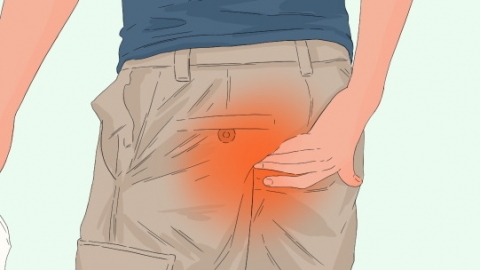What are the differences between an anal boil and an anal fistula?
Perianal boils are acute suppurative infections of hair follicles and sebaceous glands around the anus, while anal fistulas are usually sequelae following rupture of perianorectal abscesses. There are significant differences between the two conditions in terms of etiology, clinical presentation, disease course, lesion structure, and treatment approaches. The specific analysis is as follows:

1. Etiology: Perianal boils often result from inadequate hygiene of the perianal skin, leading to bacterial invasion of hair follicles and subsequent infection. Spicy diet, prolonged sitting, and local heat exposure may also increase the risk. Anal fistulas primarily develop when perianorectal abscesses are inadequately treated; after spontaneous rupture or incision and drainage, residual infected tracts persist and form fistulas.
2. Clinical Presentation: Early-stage perianal boils present as red, swollen, firm nodules accompanied by significant pain. As they mature, yellow-white pus heads appear at the top, and once ruptured, pus is discharged with rapid relief of pain. Anal fistulas are mainly characterized by recurrent discharge of pus and itching around the anus. The amount of pus varies over time and can irritate the skin, leading to eczema. Local redness, swelling, and pain only occur during acute infection episodes.
3. Disease Course: Perianal boils have a short course, typically resolving spontaneously within 1–2 weeks through rupture and healing, or rapidly regressing with anti-infective treatment. In contrast, anal fistulas follow a prolonged chronic course with recurrent episodes, intermittent pus discharge, and cannot heal on their own. Without treatment, they cause long-term discomfort.
4. Lesion Structure: A perianal boil is a single, acute suppurative focus confined to the skin and subcutaneous tissue, without complex tracts. An anal fistula consists of three components: an internal opening (located in the rectum or anal canal), a fistulous tract, and an external opening. The tract connects the internal and external openings, forming a penetrating pathological channel.
5. Treatment: Perianal boils are mainly managed conservatively. Before abscess formation, topical antibiotics and warm compresses can promote resolution. Once pus forms, incision and drainage lead to cure. Anal fistulas require surgical intervention—complete removal of the fistulous tract and proper management of the internal opening—for definitive cure. Medication alone can only alleviate symptoms but not achieve eradication.
Maintaining cleanliness and dryness of the perianal area, avoiding prolonged sitting, adjusting dietary habits, and reducing intake of spicy foods can help lower the risk of both conditions.




